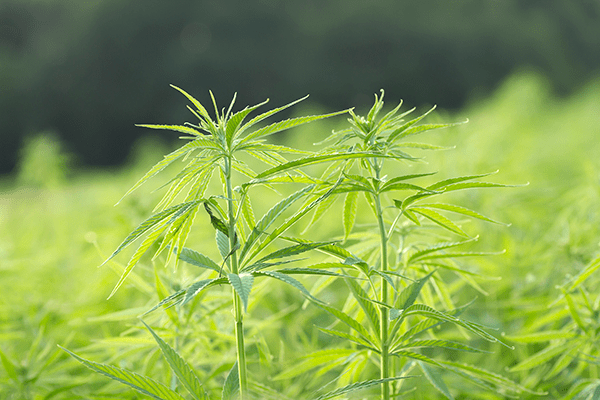|
RCBJ-Audible (Listen For Free)
|
Illicit Cannabis Sales Endanger Fledgling Legal Retail Market
Analysis
According to the Wall Street Journal, there are 1,400 bodegas, smoke shops and convenience stores selling unregulated, untaxed cannabis in New York City. Other studies view that number as understated.
A study prepared by the New York Medical Cannabis Industry Association, the New Jersey Cannabis Trade Association, and the Connecticut Medical Cannabis Council says that many of these locations falsely advertise the sale of THC products as legal, mislead consumers, and sell products blatantly masquerading as popular name-brand chocolates, candies, gummies. Testing of the products revealed several harmful contaminants, such as E. coli, pesticides, heavy metals, and salmonella in 40 percent of the illegal products purchased, including vapes.
And, what about the illicit market? How can legitimate licensed dispensaries compete with the multitude of illegal operations?
There are no reliable statistics on the number of retail outlets in the Hudson Valley selling cannabis, but one only need go to certain convenience stores, smoke shops or bodegas and ask the right questions to find illicit, untested and untaxed cannabis for sale.
New York passed the Marijuana Regulation and Taxation Act (MRTA), the law that legalized cannabis in New York in March 2021. It took more than 18 months before the first retail dispensary opened in New York City.
A legal challenge to the system that awarded licenses successfully derailed the issuance of any retail dispensary licenses in the Hudson Valley (and much of the state) because the regulations favored in-state residents over out-of-state applicants. The Second Circuit Court of Appeals recently cleared the path for the issuance of licenses for most of the state save the Finger Lakes region which is still mired in litigation.
Yet despite the enormity of the state agencies involved, the Cannabis Control Board, the Office of Cannabis Management (OCM) and the State Dormitory Authority, there are only ten operating dispensaries in the entire state, five of which are located in New York City, and one which does not have a retail location but makes deliveries under a recent revision in the law. Last week eleven new licenses were issued for dispensaries in the Mid-Hudson region, but it will likely take many months for these new licensees to open their doors.
The New York State Dormitory Authority, charged with assisting and approving locations for licensees, have reviewed over 10,000 potential locations and approved only four. Changes in the law now allow licensees to find, negotiate, and lease their own locations in the free market.
Each of these open retail outlets has paid significant fees, invested heavily in approved, regulated, and taxed products, and by all accounts are making significant sales. OCM has recently doubled its approved licenses from 150 to 300, but each of those successful applicants are likely months away from opening their doors.
New York allowed towns and villages to opt-out of retail dispensaries in their jurisdictions creating marijuana deserts throughout the state, leaving entire towns and counties open to illicit sellers.
And, what about the illicit market? How can legitimate licensed dispensaries compete with the multitude of illegal operations?
Story after story talks about how the streets of Manhattan reek of marijuana smoke. Stores operate openly selling illegal weed. Mobile vans set up shops on street corners. The police and the state seem too busy to do anything about it, or have intentionally turned a blind eye. Imagine a bar opening up in your neighborhood without a liquor license. The police are all over individuals selling unlicensed and untaxed cigarettes.
Until the illicit market is tamed and contained, the success of the licensed retail market is uncertain.
An unlicensed outlet can sell an eighth of an ounce of marijuana for $25, while the cost at a licensed dispensary can be $80 an eighth, according to a report by the PBS Newshour last month. Also, the drive to a licensed dispensary can be more than an hour away depending on where you live.
Many consumers cross the border to New Jersey or to Massachusetts. In Massachusetts, the legal cannabis industry took time to establish. The first year it was estimated that 90 percent of consumers were still in the underground market. Now, five years later, dispensaries are established, prices have dropped significantly, and more recent estimates suggest that about 50 percent or more of sales are taking place in the regulated market. Regulated and taxed sales from more than 265 licensed dispensaries in Massachusetts reached $1.5 billion dollars in 2022.
In New Jersey’s first year of retail sales, its 38 licensed dispensaries generated nearly a half-billion dollars in retail sales.
According to Forbes, the estimated size of the New York market is between $4.2 and $6 billion dollars annually. Grandview Research puts the figure closer to $7 billion dollars by 2025.
However, to get there, the open air and underground illicit markets need to be brought to heel. Proposals on the table include fines to illegal operators up to $200,000 and empowering the State Department of Taxation and Finance to enforce tax collections on weed sales, legal or otherwise. But the most important enforcement technique being overlooked is the use of the police and the criminal justice system to shut down illegal operations.
Whatever mix of enforcement the State decides on, the future of the regulated cannabis industry depends on its effectiveness.










